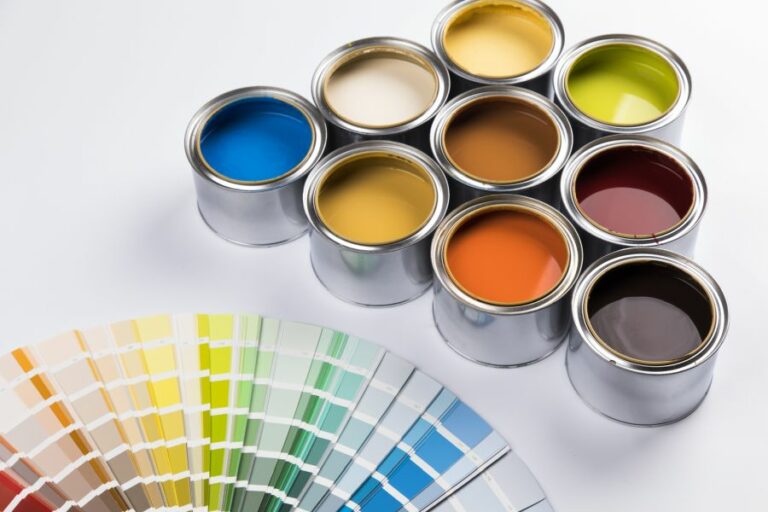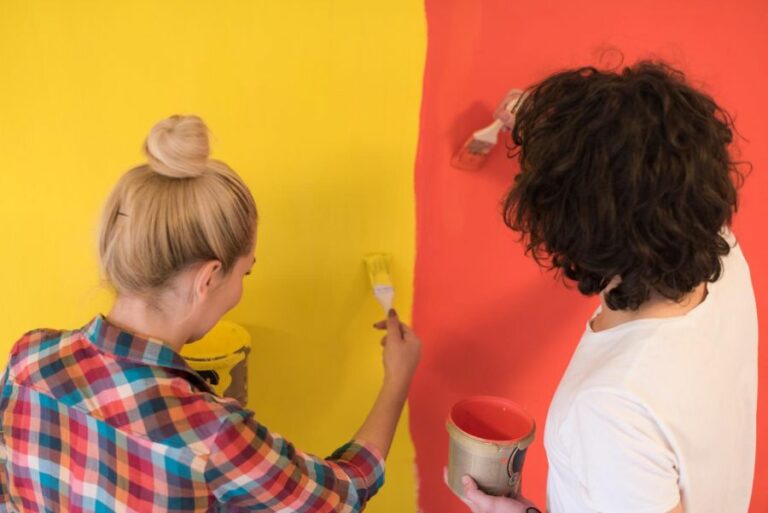Outdoor Paint Sealer For Wood, 25 Things You Should Know
Selecting the right outdoor paint sealer is crucial when protecting and preserving the beauty of the wood used in outdoor projects. Not only does it play a significant role in providing an aesthetically appealing look, but it also helps to maintain the wood’s integrity and durability. Luckily, I have extensive experience in this area and can guide you in exploring the various options available in the market to find the perfect sealer that caters to your wood’s specific requirements.
Outdoor paint sealer for wood:
Outdoor paint sealer for wood is essential for protecting and maintaining outdoor wooden structures against harsh weather conditions. When choosing a sealer, consider regional climate, wood type, and desired appearance. Options include water-based, oil-based, clear, tinted, semi-transparent, and solid sealers. Proper application, weather conditions, and routine maintenance ensure maximum durability and longevity of the wood.

Want to protect your wood surfaces from the elements while maintaining their natural beauty? We’ve got you covered! Read on to discover the benefits of outdoor paint sealer for wood, tips for application, and product recommendations that’ll have your wood projects looking fresh and long-lasting.
Contents
- 1 Exterior Wood Paint Sealant for Outdoor Protection
- 2 What is the Best Method for Sealing Exterior Painted Wood Surfaces?
- 3 What is the Most Effective Sealer for Outdoor Painted Wood Surfaces?
- 4 Is It Necessary to Seal Outdoor Painted Wood?
- 5 What are the suitable materials for sealing painted wood surfaces?
Exterior Wood Paint Sealant for Outdoor Protection
Outdoor wooden structures require proper maintenance and protection against harsh weather conditions to ensure their longevity and retain their natural beauty.
• Choosing the Right Outdoor Paint Sealer
There are several factors to consider when selecting an outdoor paint sealer for your wooden structures, such as your regional climate, the specific type of wood, and your desired look. These factors will help you determine the appropriate product for the job.
– Water-Based vs. Oil-Based Sealers
Wood sealers are typically available in two types: water-based and oil-based.
- Water-Based Sealers – These sealers are easier to clean up, dry faster than oil-based sealers, and contain fewer volatile organic compounds (VOCs). They are also more eco-friendly and offer better resistance to mildew and mold. An example of a water-based sealer is Olympic WaterGuard.
- Oil-Based Sealers – These sealers penetrate deeper into the wood, providing better protection from moisture and UV rays. They also provide a more durable and longer-lasting finish but are harder to clean up and have a more extended drying time. An example of an oil-based sealer is CABOT Australian Timber Oil.
– Level of Shine and Color
Wood sealers come in various colors and levels of shine to enhance your wood’s natural beauty and match your desired aesthetic:
- Clear: These sealers contain no pigments, allowing the wood’s color and grain to show through. Clear sealers are recommended for preserving the natural appearance of the wood.
- Tinted: – These sealers offer UV protection as well as enhanced color and grain definition. Tints are available in various shades, from light to dark, which can create a more customized look.
- Semi-Transparent: These sealers add some color to the wood surface, provide UV protection and accentuate the wood’s grain pattern.
- Solid: These sealers completely cover the wood grain, provide the highest level of UV protection, and offer the most extensive range of color options.
– Applying Outdoor Paint Sealer**
Proper application of outdoor paint sealer is critical to ensure the best protection and maximum durability for your wood. Follow these steps for a successful and lasting result:
- Preparing the Surface: Before you begin the sealing process, examine the wood surface for any dirt, peeling paint, or other surface contaminants. Clean the surface thoroughly using a wood cleaner and stiff-bristle brush, then let the wood dry completely. If the wood has not been previously sealed, smooth rough areas by gently sanding with fine-grit sandpaper and wipe away sanding dust using a tack cloth.
- Testing the Wood: Before applying the sealer, test for porosity by sprinkling a few drops of water on the wood surface. If the water is absorbed within 30 seconds, the wood is ready for sealing. If not, the surface may be treated with a wood brightener, or re-sanding may be necessary to open wood pores for better sealer absorption.
- Choosing Proper Weather Conditions: Apply outdoor paint sealer in dry conditions when there is no rain in the forecast. Ideal application temperatures are between 50F and 90F. Avoid applying the sealer in direct sunlight, as this may cause uneven drying and an undesirable finish.
- Applying the Sealer: Stir the sealer before starting and during application to ensure uniform consistency. Apply the sealer using a brush, roller, or sprayer, depending on your preference and the size of your project. Ensure a smooth, even coat, fully covering the wood surface. Avoid applying too much sealer at once, as this may cause pooling and uneven drying. Allow the first coat to dry according to the manufacturer’s instructions before applying a second coat if needed.
- Maintaining the Finish: The lifespan of outdoor paint sealer depends on various factors, including the product used, wood type, and weather conditions. Regularly inspect the wood surface for peeling, blistering, and other signs of wear. Generally, reapplication of the sealer is needed every 2-5 years, depending on the quality of the product and environmental factors.
• Conclusion
Outdoor paint sealer for wood is a crucial investment to protect and maintain the appearance of the wood surfaces on your property.
Understanding the different types of outdoor paint sealers, choosing the best product for your needs, and following recommended application methods will ensure your outdoor wooden structures remain beautiful and functional for years to come.
What is the Best Method for Sealing Exterior Painted Wood Surfaces?
Painted wood surfaces exposed to the outdoors require proper sealing to ensure they remain protected against the elements. Whether it’s a wooden deck, siding, or outdoor furniture, a well-maintained exterior painted wood surface not only adds to the beauty of your property but also increases its value.
• Importance of Sealing Exterior Painted Wood
Outdoor painted wood surfaces are exposed to various elements such as sunlight, rain, snow, and humidity, which can cause the paint to peel, crack or fade away. Sealing is an essential step to ensure long-lasting protection of the painted wood.
- Protection from UV Rays: Sealing creates a barrier that prevents harmful UV rays from penetrating the wood and causing damage to the paint.
- Moisture Resistance: A properly sealed surface helps protect the painted wood from moisture, preventing warping, swelling, and mold growth.
- Longevity: Sealing exterior painted wood surfaces ensures that the paint and underlying wood last for many years, reducing maintenance costs and efforts.
• Choosing the Right Sealer
Selecting the right sealer for your painted wood surface depends on the type of paint used, the type of wood, and the conditions it will be exposed to. Here are a few options:
– Clear Sealers
Clear sealers are transparent coatings that do not alter the appearance of the paint. They often contain UV inhibitors and work best for light-colored painted surfaces, as these surfaces are more susceptible to UV damage.
– Tinted Sealers
Tinted sealers provide additional protection against UV rays and fading by adding a slight color to the coating. They work well for darker painted surfaces, as they help maintain the vibrancy of the color.
– Oil-Based Sealers
Oil-based sealers penetrate deeper into the wood and offer longer-lasting protection than water-based sealers. However, they may take longer to dry and emit stronger fumes during application.
– Water-Based Sealers
Water-based sealers are eco-friendly and have lower volatile organic compound (VOC) emissions. They dry faster than oil-based sealers but may not offer the same level of protection.
In general, it is best to choose a sealer specifically designed for exterior painted wood surfaces from a reputable manufacturer. Check the label carefully and consult the manufacturer’s guidelines if you are unsure which sealer is suitable for your project.
• Preparing the Surface
Before sealing, the painted wood surface must be clean, dry, and free from dirt, mildew, and peeling paint.
- Cleaning: Use a gentle scrub brush and a solution of mild detergent and warm water to remove dirt and debris. Alternatively, you may use a pressure washer on a low-pressure setting to clean the surface. Avoid using harsh chemicals, as they may damage the paint or the wood.
- Drying: Allow the surface to dry completely before proceeding. This may take anywhere from 24 to 48 hours, depending on the conditions.
- Sanding: Lightly sand the surface with fine-grit sandpaper (220-grit or finer) to improve adhesion of the sealer. Remove any dust or debris with a tack cloth or a soft brush.
- Repairing Damaged Paint: If the paint is peeling or cracking, remove the damaged areas with a scraper or sandpaper, and repaint the area. Allow the new paint to dry according to the manufacturer’s instructions before sealing.
• Applying the Sealer
Application techniques will vary depending on the sealer and equipment used, but here are some general guidelines to follow:
- Stir the Sealer: Stir the sealer well before and during application to ensure even distribution of protective ingredients.
- Choose the Appropriate Application Method: Sealer can be applied with a brush, roller, or sprayer. Brushes work well for smaller areas and fine details, while rollers or sprayers are ideal for larger surfaces.
- Apply the Sealer in Thin, Even Coats: Applying the sealer in thin, even coats helps avoid drips, runs, and excessive build-up. Allow each coat to dry according to the manufacturer’s directions before applying additional coats. Two to three coats are typically recommended for optimum protection.
- Use Proper Technique: To prevent visible brush marks, use long, smooth strokes when applying sealer with a brush. When using a roller, work in sections and use overlapping “W” patterns to ensure even coverage.
• Maintenance and Recoating
To keep exterior painted wood surfaces in good condition, perform regular maintenance by cleaning the surface at least once per year and inspecting it for signs of wear, such as peeling paint or sealer.
Recoat the surface with a sealer every two to three years or as needed based on the condition of the surface and the manufacturer’s recommendations.
In conclusion, sealing exterior painted wood surfaces not only extends the life of the paint and wood itself but also enhances the appearance and value of your property.
By following the steps outlined in this guide, choosing the right sealer, and conducting regular maintenance, your painted wood surfaces will remain protected and look their best for years to come.
What is the Most Effective Sealer for Outdoor Painted Wood Surfaces?
When it comes to protecting painted wood surfaces outdoors, choosing the right sealer is crucial. The best sealer for outdoor painted wood will offer protection from the elements and prevent the paint from fading, peeling, and rotting.
• Why Do You Need a Sealer for Outdoor Painted Wood?
Before diving into the details of wood sealers, you might wonder why it is essential to apply a sealer on your outdoor painted wood surfaces.
A wood sealer forms a protective layer, serving as a shield from factors like moisture, sun exposure, and temperature fluctuations that contribute to the wood’s deterioration. A sealant also enhances the paint’s durability, ensuring it remains vibrant and supports the wood’s integrity for a more extended period.
• Top Types of Sealers for Outdoor Painted Wood
Now that we understand the importance of sealing outdoor painted wood, let’s review the various types to help you make an informed decision.
1. Water-Based Sealers
Water-based sealers are gaining popularity because of their environment-friendly nature and low odor. They dry quickly and are known for their clarity and durability. These sealers do not emit volatile organic compounds (VOCs) that harm the environment.
While water-based sealers are resistant to moisture and can prevent the wood from warping, but they might not provide the same level of UV protection as oil-based sealers.
2. Oil-Based Sealers
Oil-based sealers penetrate deeper into the wood grain and give a rich, natural finish. They offer excellent UV protection and are known for their long-lasting performance. However, oil-based sealers do emit VOCs and have a strong odor during application. They also take longer to dry.
3. Spar Urethane
Spar urethane is a versatile sealer that provides excellent protection against water, UV rays, and temperature fluctuations, making it an ideal choice for outdoor painted wood. It dries clear and does not yellow over time.
Spar urethane is available in water-based and oil-based varieties, so you can choose depending on your preference and needs.
4. Marine Varnish
Marine varnish is specifically designed to endure harsh outdoor conditions, making it a suitable option for sealing outdoor painted wood. It provides excellent water and UV resistance and is non-yellowing.
However, marine varnish might not be the best choice if you desire a more flexible finish, as it tends to be relatively rigid.
• How to Choose the Best Sealer for Outdoor Painted Wood
When selecting a wood sealer, consider factors like climate, wood type, existing wood finish, and your preferences. A sealer should be compatible with the base paint, so always verify compatibility before applying a wood sealant.
For instance, if you live in an area with extreme weather conditions, opt for a sealer that provides both water and UV protection, such as spar urethane.
If you prefer a more environment-friendly option, choose a water-based sealer, but keep in mind that it might not offer the same UV protection as an oil-based sealer.
• How to Apply a Wood Sealer
Once you have selected the best sealer for your outdoor painted wood, follow these steps for sealing the surface:
- Prepare the surface: Ensure the painted wood surface is clean and free of dust, debris, and loose paint. If necessary, sand the surface with fine-grit sandpaper and remove any lingering dust with a tack cloth.
- Stir the sealer: Stir the sealer well before application. Do not shake the can, as it can introduce air bubbles.
- Apply the sealer: Using a high-quality brush, apply a thin and even coat of sealer in long, smooth strokes along the wood grain. Avoid over-brushing or applying a thick coat, which may lead to an uneven finish.
- Allow the sealer to dry: Follow the sealer manufacturer’s recommendations for drying times. Most sealers require at least 24 hours to dry completely.
- Apply additional coats: If needed, apply additional coats for added protection. Lightly sand between coats using fine-grit sandpaper and clean any residue with a tack cloth.
• Conclusion
In conclusion, the best sealer for outdoor painted wood largely depends on individual needs, preferences, and environmental conditions. Factors such as UV exposure, moisture protection, and eco-friendliness should be taken into consideration when selecting a wood sealer.
A good starting point is spar urethane for its versatility and overall protective qualities. Regardless of which sealer you choose, proper application and maintenance are crucial to ensure your outdoor painted wood surfaces are protected for years to come.
Sealer | Type | Features | Approximate Cost |
|---|---|---|---|
Rust-Oleum Varathane 200261H Water-Based Ultimate Polyurethane | Water-based | Quick drying, low odor, non-yellowing, provides durability and scratch resistance | $15-$20 per quart |
General Finishes QTHS High-Performance Water-Based Topcoat | Water-based | UV resistant, high durability, fast drying, easy clean-up, transparent color | $25-$30 per quart |
Minwax Helmsman 63200 Spar Urethane | Oil-based | UV blockers, excellent durability, water-resistant, suitable for various wood types | $20-$25 per quart |
Rain Guard Water Sealers SP-1104 Gloss Sealer Ready to Use | Water-based | Mold and mildew resistant, UV resistant, prevents water damage, easy to apply | $30-$35 per gallon |
Is It Necessary to Seal Outdoor Painted Wood?
Sealing outdoor painted wood is crucial for preventing potential damage to the wood, maintaining its durability, and increasing its lifespan. A good sealant can protect outdoor wood against various elements such as water, sunlight, fungi, and pests.
• Benefits of Sealing Outdoor Painted Wood
– Protection Against Water and Moisture
Outdoor wood is constantly exposed to various weather elements, primarily moisture from rain, dew, and humidity. Sealing outdoor painted wood helps repel water, preventing it from penetrating the wood’s surface and causing decay, warping, or swelling.
A good water-resistant sealant can help maintain the wood’s structural integrity and prolong its lifespan.
– UV Protection
Prolonged exposure to sunlight can cause the paint on wooden surfaces to fade, chip, or peel. UV-resistant sealants can shield the paint, maintaining its color and sheen and ultimately adding years of life to your paint job.
– Protection Against Fungi and Pests
Fungi, such as mold and mildew, can weaken outdoor wood, while pests like termites and carpenter ants can cause irreversible damage. A good sealant can create a barrier against these threats, preserving the wood’s strength and structural integrity.
– Improved Aesthetics
Sealing outdoor painted wood can enhance its appearance and make it more visually appealing. A good sealant can give the wood a shiny or matte finish, depending on your preference, making it look well-maintained and polished.
• Considerations Before Sealing Outdoor Painted Wood
– Type of Wood
Some types of wood, such as cedar, redwood, and cypress, contain natural oils that make them resistant to moisture, rot, and insects. These types of woods may not require sealing, but using a sealant can enhance their durability and appearance.
– Type of Paint
Consider the type of paint used on the wooden surface. Typically, oil-based paints are more durable than water-based ones and, thus, may not require sealing. However, regardless of the paint type, a sealant can protect the paint job and prolong its life.
– Climate and Environment
Areas with fluctuating weather conditions, such as high humidity, frequent rains, or extreme temperatures, can adversely impact the longevity of your outdoor painted wood. In such instances, it is highly recommended to seal the wood for added protection.
• Types of Sealants for Outdoor Painted Wood
– Clear Coating Sealant
A clear coating sealant provides a transparent, protective layer leaving the paint visible. This type of sealant offers UV protection, water resistance and allows the paint’s finish to shine through. Clear-coating sealants are usually made from polyurethane, lacquer, or varnish.
– Stain Sealant
A stain sealant acts as both a sealant and a stain, providing added color and appearance enhancement while protecting the wood. This sealant is an excellent option for those looking for additional UV protection and water resistance while enhancing the wood’s visual appeal.
– Penetrating Sealant
Penetrating sealants provide deep penetration into the wood’s fibers, offering the highest level of protection against water and moisture. Examples of penetrating sealants are oils, such as linseed oil or tung oil, which are excellent choices for preserving the wood’s natural texture and grain.
– Water Repellent Sealants
Water-repellent sealants are designed primarily to protect against water and moisture. This type of sealant repels water by creating a barrier on the surface of the wood. Examples of water-repellent sealants include acrylic-based products or silicone-based products.
• Tips for Proper Sealing of Outdoor Painted Wood
- Prepare the Surface: Sand and clean the wooden surface before applying the sealant. This ensures better adhesion and coverage.
- Select the Appropriate Sealant: Choose a sealant based on your preferences, considering factors such as durability, protection, and aesthetics.
- Apply Multiple Coats: For optimal protection, apply multiple coats of the sealant according to the manufacturer’s instructions. Each coat should be allowed to dry before applying the following coat.
- Monitor Drying Times: Drying times can vary based on temperature and humidity. Always follow the manufacturer’s recommendations for drying times.
- Regular Maintenance: To ensure the longevity of your sealed outdoor painted wood, perform regular maintenance checks and touch-ups, if necessary.
In conclusion, sealing outdoor painted wood is an essential step for preserving its durability, appearance, and lifespan.
Determining the right sealant for your specific circumstances and following proper application and maintenance practices can make all the difference in extending the life of your outdoor wooden surfaces.
What are the suitable materials for sealing painted wood surfaces?
Sealing painted wood is an essential step to protect your wooden surfaces and maintain the durability of the paint. Choosing the right sealer is crucial to ensure the longevity of your project.
• Water-Based Polyurethane
Water-based polyurethane is one of the most popular and widely used sealants for painted wood. It creates a durable and clear protective layer that is perfect for indoor projects. This includes furniture, cabinets, and decorative pieces.
I recommend using a high-quality water-based polyurethane such as Minwax Polycrylic or Varathane Crystal Clear. These products are designed to be low odor and can be easily cleaned up with soap and water.
– Advantages
- Fast drying time: Usually dries within 2 hours.
- Low odor: Suitable for use in confined spaces.
- Clear finish: Will not turn yellow over time, making it ideal for light-colored surfaces.
– Application Tips
- Lightly sand your painted surface with 220-grit sandpaper.
- Remove any dust and debris with a tack cloth.
- Apply thin coats using a synthetic bristle brush or foam applicator.
- Allow to dry completely between coats.
- Apply at least three coats for optimal protection.
• Oil-Based Polyurethane
Oil-based polyurethane is another excellent choice for sealing painted wood. This type of sealer is well suited for heavy-duty projects or surfaces subjected to significant wear and tear, like wooden floors and outdoor furniture.
A popular oil-based polyurethane is Minwax Fast-Drying Polyurethane or Old Master’s Polyurethane. Both provide a strong, durable finish that can withstand the test of time.
– Advantages
- Highly durable: Ideal for high-traffic surfaces.
- Resistant to water, stains, and scratches.
- Self-leveling properties: Easier to achieve an even finish.
– Application Tips
- Prepare your painted surface similar to water-based polyurethane.
- Use a natural bristle brush for application, as synthetic bristles might dissolve in the oil-based sealer.
- Apply thin coats and allow to dry for at least 4 hours between coatings.
- Recoat at least three times for maximum protection.
• Wax
Wax is another option for sealing painted wood, particularly for furniture undergoing light to moderate use. It provides a more natural finish and creates a smooth, velvety texture.
I recommend using high-quality furniture wax, such as Annie Sloan Soft Wax or Fiddes & Sons Supreme Wax Polish.
– Advantages
- Natural appearance: Enhances the beauty of your painted surface.
- Simple application: Can typically be applied with a cloth.
- Easy to reapply: Requires minimal preparation for recoating.
– Application Tips
- Ensure your painted surface is clean, dry, and free of dust.
- Apply a thin layer of wax with a lint-free cloth, working in small sections.
- Allow the wax to dry for 15-20 minutes.
- Buff the surface with a clean, lint-free cloth, using circular motions to achieve a smooth finish.
- Reapply additional wax layers as needed for extra protection.
• Sealers to Avoid
It is essential to avoid using lacquer or shellac on painted wood surfaces, as these sealers contain solvents that can damage the paint or cause it to peel.
• Conclusion
In conclusion, the type of sealer you choose for your painted wood project will depend on various factors, including the intended use and the desired finish. Water-based polyurethane is a versatile choice for indoor applications, while oil-based polyurethane is more suitable for heavy-duty projects.
Wax is an excellent option for a more natural-looking finish on furniture undergoing light to moderate use.







